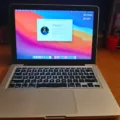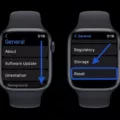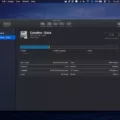When attempting to write the last block of a device on a Mac, you may encounter the issue of being unable to complete the process. This can be frustrating, but there are a few possible solutions you can try.
Firstly, it’s important to check if there is any physical damage to the device or the connection. Inspect the cables and ports for any signs of wear or damage. If you find any issues, try using a different cable or port to see if that resolves the problem. Sometimes, a faulty connection can cause errors in writing the last block.
If you are using an external SSD, it’s recommended to connect it internally if possible. Using an internal connection can help eliminate any potential communication issues that may arise from external connections.
In some cases, the error may be caused by the disk you are trying to erase being the boot disk. In this situation, you won’t be able to erase it directly. To overcome this, you can boot your Mac in Recovery mode or use an external USB disk or USB stick to boot from. Once in the appropriate mode, launch Disk Utility and select the USB drive volume you want to erase. Follow the on-screen instructions to format it and then restart your Mac to exit the Recovery mode.
If none of these solutions work, it’s recommended to seek professional assistance. There may be underlying hardware or software issues that require expert attention to resolve.
Encountering the inability to write the last block of a device on a Mac can be frustrating, but there are steps you can take to troubleshoot and resolve the issue. By checking for physical damage, changing cables or ports, and considering booting options, you can increase the chances of successfully completing the erase process. If all else fails, seeking professional help is advised.
Why is Your Macbook Air Unable to Write to the Last Block of the Device?
There can be several reasons why your MacBook Air is unable to write to the last block of the device. Here are some possible explanations:
1. Disk Space: Check if your device has enough free space to accommodate the data you are trying to write. If the storage is almost full, the operating system may not allow you to write to the last block.
2. File System Errors: File system errors can prevent you from writing to the last block of the device. Run a disk utility tool to check for any errors and repair them if necessary.
3. Permissions: Ensure that you have the necessary permissions to write to the last block. If you are trying to write to a system directory or a protected area, you may encounter restrictions.
4. Physical Damage: If your device has physical damage, such as a damaged disk or connection, it may prevent you from writing to the last block. Check for any visible signs of damage and consider getting it repaired.
5. Unsupported File System: If the file system of the device is not compatible with your MacBook Air, it may cause issues when writing to the last block. Verify the file system compatibility and consider reformatting the device if needed.
6. Malware or Software Conflict: Malware or conflicting software can interfere with writing to the last block. Run a malware scan and check for any recently installed software that might be causing conflicts.
If none of these solutions work, it is recommended to seek professional help or contact Apple support for further assistance.

What Does Unable to Write to the Last Block of the Device Mean?
“Unable to write to the last block of the device” refers to a situation where the system or software is unable to write data to the final storage block of a device, such as a solid-state drive (SSD). This error message usually indicates a problem with the device’s connection or functionality.
There are several possible reasons for this error:
1. Communication Error: A communication error between the device and the computer can prevent data from being written to the last block. This can be caused by a faulty cable, a loose connection, or a problem with the USB port.
2. Faulty Connection: If the SSD is connected externally, using an enclosure or USB cable, a faulty connection can lead to issues with writing data. In such cases, changing the cable or enclosure and trying a different USB port can resolve the problem.
3. Device Issues: The SSD itself may have a fault or malfunction that prevents data from being written to the last block. This could be due to physical damage, firmware issues, or wear and tear over time.
Why Won’t Your Mac Let You Erase Disk Utility?
There are several possible reasons why Disk Utility may not allow you to erase a disk on your Mac:
1. Booting from the disk: If you are trying to erase the disk that you have booted from, Disk Utility will not allow it. This is because you cannot modify or erase the disk that is currently in use by the operating system. To erase your startup disk, you will need to boot your Mac in Recovery mode or use an external USB disk or USB stick.
2. Disk permissions: If you do not have the necessary permissions to modify or erase the disk, Disk Utility will prevent you from doing so. Make sure that you are logged in as an administrator or have appropriate permissions to perform disk operations.
3. Disk errors: If the disk you are trying to erase has errors or is experiencing issues, Disk Utility may not be able to perform the erase process. In such cases, you may need to repair the disk first using the First Aid feature in Disk Utility.
4. File system format: Disk Utility may also restrict erasing certain disk formats or file systems. For example, if the disk is formatted as APFS and you are using an older version of macOS that does not support APFS, Disk Utility may not allow you to erase it. Ensure that your macOS version is compatible with the file system format you want to use.
5. Disk encryption: If the disk you are trying to erase is encrypted, Disk Utility may require you to decrypt it before erasing. This is to ensure that you do not accidentally erase and lose important data. Decrypt the disk first, and then try erasing it using Disk Utility.
To troubleshoot the issue further, you can try restarting your Mac, repairing disk permissions, updating macOS to the latest version, or using third-party disk management software. If none of these solutions work, it may indicate a more serious hardware or software problem that requires professional assistance.
How Do You Force Erase an External Drive on a Mac?
To force erase an external drive on a Mac, you can follow these steps:
1. First, connect the external drive to your Mac.
2. Open the Disk Utility application. You can do this by going to “Applications” > “Utilities” > “Disk Utility.”
3. In the Disk Utility window, locate the external drive that you want to erase from the list on the left-hand side.
4. Select the external drive by clicking on it once. Make sure you have selected the correct drive to avoid accidentally erasing important data.
5. Click on the “Erase” button at the top of the Disk Utility window.
6. A new window will appear, allowing you to choose the format for the drive. Select the format that suits your needs. If you’re unsure, you can choose “Mac OS Extended (Journaled)” which is a commonly used format.
7. Give the drive a name in the “Name” field if desired.
8. click on the “Erase” button to start the erasing process.
9. Depending on the size of the drive, it may take some time to complete the erase process. Once it’s finished, you will see a confirmation message.
10. You can now quit Disk Utility and safely remove the external drive from your Mac.
Please note that erasing a drive will permanently delete all data on it. Make sure to back up any important files before proceeding with the erase.
Conclusion
If you are experiencing an error while trying to erase your SSD or encountering a communication issue, there are a few steps you can take to resolve the problem. Switching ports and cables can help address any connection issues that may be causing the error. If your SSD is connected externally, try using a different USB port and replace the USB cable or enclosure if necessary. If possible, consider connecting the SSD internally to your system for better stability.
Additionally, it is important to note that you cannot erase the disk you are currently booting from. If you want to erase your startup disk, you will need to either boot in Recovery mode or boot from an external USB disk or USB stick. Follow the steps provided in the previous response to properly erase your USB drive volume using Disk Utility in the macOS Utilities window.
By following these steps, you can troubleshoot and resolve any issues you may encounter while attempting to erase your SSD. Remember to always backup your important data before performing any actions that involve disk formatting or erasing to avoid any data loss.













